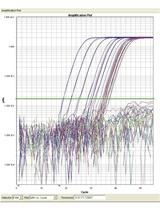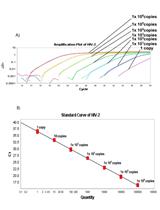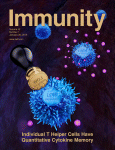- Submit a Protocol
- Receive Our Alerts
- Log in
- /
- Sign up
- My Bio Page
- Edit My Profile
- Change Password
- Log Out
- EN
- EN - English
- CN - 中文
- Protocols
- Articles and Issues
- For Authors
- About
- Become a Reviewer
- EN - English
- CN - 中文
- Home
- Protocols
- Articles and Issues
- For Authors
- About
- Become a Reviewer
HBV Infection in Human Hepatocytes and Quantification of Encapsidated HBV DNA
Published: Vol 6, Iss 2, Jan 20, 2016 DOI: 10.21769/BioProtoc.1717 Views: 10963
Reviewed by: Jia LiRamalingam BethunaickanAnonymous reviewer(s)

Protocol Collections
Comprehensive collections of detailed, peer-reviewed protocols focusing on specific topics
Related protocols

Quantification of HIV RNA and Human Herpesvirus DNA in Seminal Plasma
Milenka V. Vargas-Meneses [...] Sara Gianella
May 5, 2015 10762 Views

Quantification of HIV-2 DNA in Whole Blood
Zsófia Szojka [...] Patrik Medstrand
Oct 20, 2019 5643 Views

Rapid Plasmid-Free Generation of Recombinant Positive-Strand RNA Viruses That Use IRES-Mediated Translation Using an Expansion of the Circular Polymerase Extension Reaction (CPER)
Hirotaka Yamamoto [...] Takausuke Fukuhara
Apr 20, 2025 1613 Views
Abstract
Human hepatic cancer cell lines such as HepG2, Huh7, and HLE cannot get infected with Hepatitis B virus (HBV) due to lack of an HBV receptor(s). Transfection with HBV genome has so far been referred as a tool to mimic HBV infection. However, since sodium taurocholate cotransporting polypeptide (NTCP) was identified as a functional receptor for HBV (Yan et al., 2012), hepatocyte cell lines that were stably transfected with a plasmid for NTCP expression have been used for HBV infection. This protocol is designed for infection with HBV in human hepatocyte cell line HepG2 expressing NTCP (HepG2-hNTCP-C4 cells; Iwamoto et al., 2014) or primary human hepatocytes (PHHs). In this section, we also describe one of the methods for the assessment of HBV infection: Quantification of the intracellular encapsidated HBV DNA.
Keywords: Hepatitis B virusMaterials and Reagents
Materials
- 0.1-10 μl pipet tips (Thermo Fisher Scientific, catalog number: QSP#TF104 )
- 1-200 μl and 100-1,000 μl pipet tips (Corning, catalog numbers: 4845 and 4846 , respectively)
- Falcon 12-well tissue culture plate (Corning, catalog number: 353043 )
- Biocoat collagen I cellware 12-well plate (Corning, catalog number: 356500 )
- 1.5 ml and 2.0 ml microcentrifuge tubes (Corning, catalog numbers: MCT-150-A and MCT-200-C , respectively)
- 15 ml and 50 ml centrifuge tubes (Corning Incorporated, catalog numbers: 352096 and 352070 , respectively)
- 96-well fast plate (NIPPON Genetics, catalog number: 38801 )
Reagents
- Hepatocyte culture and infection with HBV
- Primary human hepatocytes (PHHs) (PhoenixBio Co.)
- HepG2-hNTCP-C4 cells (Drs. Takaji Wakita and Koichi Watashi, Department of Virology II, National Institute of Infectious Diseases, Tokyo, Japan; Iwamoto et al., 2014)
- Dulbecco’s Modified Eagle’s Medium (DMEM) (NISSUI PHARMACEUTICAL, catalog number: 05919 )
- DMEM/F-12+GlutaMax (Life Technologies, catalog number: 31331-028 )
Note: Currently, it is “Thermo Fisher Scientific, Gibco™, catalog number: 31331-028 ”. - 4-(2-hydroxyethyl)-1-piperazineethanesulfonic acid (HEPES) (Life Technologies, catalog number: 15630-080 )
Note: Currently, it is “Thermo Fisher Scientific, Gibco™, catalog number: 15630-080”. - Fetal bovine serum (FBS) (Life Technologies, catalog number: 10437-028 )
Note: Currently, it is “Thermo Fisher Scientific, Gibco™, catalog number: 10437-028”. - G418 (Nacalai tesque, catalog number: 09380-86 )
- Phosphate-buffered saline (PBS) (pH 7.4)
- HBV plasmid (pUC19-HBV, genotype C) (Dr. Yasuhito Tanaka, Department of Virology and Liver Unit, Nagoya City University Graduate School of Medical Sciences, Nagoya, Japan; Sugiyama et al., 2006)
- FuGENE 6 transfection reagent (Promega Corporation, catalog number: E2692 )
- Opti-MEM I reduced-serum medium (Life Technologies, catalog number: 31985-070 )
Note: Currently, it is “Thermo Fisher Scientific, Gibco™, catalog number: 31985-070”. - QIAamp DNA Blood Mini Kit (QIAGEN, catalog number: 51104 )
- Polyethyleneglycol 8000 (PEG 8000) (Sigma-Aldrich, catalog number: 81268 )
- PHHs culture media (see Recipes)
- HepG2-hNTCP-C4 culture media (see Recipes)
- Primary human hepatocytes (PHHs) (PhoenixBio Co.)
- Encapsidated HBV DNA extraction
- Nuclease free-H2O
- Tris (hydroxymethyl) aminomethane (Tris) (Nacalai tesque, catalog number: 35406-91 )
- NP-40 (Nacalai tesque, catalog number: 25223-75 )
- Magnesium acetate (MgOAc) (Wako Pure Chemical Industries, Siyaku, catalog number: 130-00095 )
- Ethylenediaminetetraacetic acid (EDTA) (Wako Pure Chemical Industries, Siyaku, catalog number: 345-01865 )
- Proteases K (Life Technologies, catalog number: 25530-015 )
Note: Currently, it is “Thermo Fisher Scientific, Invitrogen™, catalog number: 25530-015”. - Sodium dodecyl sulfate (SDS) (Wako Pure Chemical Industries, Siyaku, catalog number: 191-07145 )
- Sodium chloride (NaCl) (Nacalai tesque, catalog number: 31320-05 )
- Deoxyribonuclease I (DNase I) (Promega Corporation, catalog number: M6101A )
- Ribonuclease A (RNase A) (Life Technologies, catalog number: 12091-021 )
Note: Currently, it is “Thermo Fisher Scientific, Invitrogen™, catalog number: 12091-021”. - Phenol:chloroform:isoamyl alcohol (25:24:1) (Sigma-Aldrich, catalog number: P2069 )
- Chloroform (KANTO CHEMICAL, catalog number: 07278-00 )
- Sodium acetate (NaOAc) (Wako Pure Chemical Industries, Siyaku, catalog number: 198-01055 )
- Glycogen (Roche Diagnostics, catalog number: 10901393001 )
- Isopropanol (Nacalai tesque, catalog number: 29113-53 )
- Ethanol (99.5%) (Nacalai tesque, catalog number: 14713-95 )
- Lysis buffer (see Recipes)
- Nuclease free-H2O
- qPCR for quantification of HBV DNA
- SYBR Premix Ex Taq (2x) (Tli RNase H Plus) (Takara Bio Company, catalog number: RR420 )
- ROX reference dye (50x) (Takara Bio Company, catalog number: A9701A )
- Primers for amplification of encapsidated HBV DNA by quantitative PCR
Forward: 5’-CTTCATCCTGCTGCTATGCCT-3’
Reverse: 5’-AAAGCCCAGGATGATGGGAT-3’
(Product length: 222 bp, product Tm: 83.5 °C)
- SYBR Premix Ex Taq (2x) (Tli RNase H Plus) (Takara Bio Company, catalog number: RR420 )
Equipment
- 37 °C and 5% CO2 cell culture incubator (WAKENBTECH CO., catalog number: 9000EX )
- Pipettes (PIPETMAN P2, P20 and P1000) (Gilson Scientific, catalog numbers: F144801 , F123600 and F123602 , respectively)
- High speed refrigerated micro centrifuge (KUBOTA Corporation, catalog number: 3500 )
- Vortex mixer (Labnet Internationa, catalog number: vx100 )
- Shaker (Tokyo Rikakikai Co., EYELA, catalog number: MMS-110 )
- Double aluminum block bath (SCINICS CORPORATION, catalog number: ALB-301 )
- ABI StepOnePlus™ Real-Time PCR Systems (Life Technologies, catalog number: 4379216 )
Note: Currently, it is “Thermo Fisher Scientific, Applied Biosystems™, catalog number: 4379216”. - qPCR adhesive seal (NIPPON Genetics, catalog number: 4Ti-0560 )
Procedure
- Hepatocyte culture and infection with HBV
- HBV preparation and measurement of HBV virus titers:
- Seed Huh7 cells to 10-cm dish as 1 x 106 cells/dish with DMEM medium supplemented with 10% FBS and cultured at 37 °C in a 5% CO2-incubator.
- After 24 h culture, per dish of Huh7 cells are transfected with 10 μg HBV plasmid (pUC19-HBV-C) in Opti-MEM I reduced-serum medium by FuGENE 6 transfection reagent following the manufacturer’s protocol.
- At 3 days after transfection, harvest the media in 50 ml tube and clear by centrifugation for 5 min at 5,000 rpm at 4 °C. The supernatant contains the HBV can be stocked at -80 °C until use for infection.
- For detection the HBV DNA copies of the harvested supernatant, 100 μl supernatant mixed with 1 μl MgOAc (600 mM), 0.5 μl RNase A (20 mg/ml), 1 μl DNase I (1 unit/μl) and incubate for 3 h at 37 °C to remove the HBV plasmid. The reaction is terminated by adding 2 μl EDTA (0.5 M, pH 8.0) and incubation for 10 min at 65 °C. Then the HBV DNA is extracted using QIAamp DNA Blood Mini Kit, and HBV titers are determined by qPCR as described below (Procedure C. qPCR for quantification of HBV DNA).
- Seed Huh7 cells to 10-cm dish as 1 x 106 cells/dish with DMEM medium supplemented with 10% FBS and cultured at 37 °C in a 5% CO2-incubator.
- Seed cells for HBV infection:
PHHs are purchased from PhoenixBio Co., Ltd. (Hiroshima, Japan) and seeded on biocoat collagen I cellware 12-well plate with 1 ml of PHHs culture medium as 1 x 105 cells/well. HepG2-hNTCP-C4 cells are generated by Drs. Takaji Wakita and Koichi Watashi (Iwamoto et al., 2014), and seeded on 12-well tissue culture plate with 1 ml of HepG2-hNTCP-C4 culture medium as 1x105 cells/well. The cells are cultured at 37 °C in a 5% CO2-incubator. - HBV infection:
After 24 h, PHHs or HepG2-hNTCP-C4 cells are incubated for 24 h at 37 °C with HBV stock aliquots containing the appropriate number of genome equivalents (GEq), which are diluted with 1 ml of culture medium supplemented with 4% PEG 8000. At the end of the incubation, cells are washed three times with culture medium, and harvested for analysis.
Note: PHHs or HepG2-hNTCP-C4 cells are infected at 10 or 100 GEq/cell, respectively.
- HBV preparation and measurement of HBV virus titers:
- Encapsidated HBV DNA extraction
- Remove culture medium, wash cells twice with cold PBS.
- Add lysis buffer 300 μl/well.
- Shake with 200 rpm/min for 20 min at cold room (4 °C) to disrupt cells.
- Transfer all cell lysates to new 1.5 ml tubes.
- Pellet nuclei and insoluble fractions by centrifugation (15,000 rpm) at 4 °C for 2 min.
- Harvest the supernatants to new 1.5 ml tubes (on ice).
- Make a mixture in the following order:
Mix order Volume (μl) 1 Nuclease free-H2O 20 2 Sample supernatant 250 3 100 mM MgOAc 18 4 RNase A (20 mg/ml) 2 5 DNase I (1 unit/μl) 10 Total 300 - Incubate the mixture sample at 37 °C for 6 h. (After this step, the sample can be kept at 4 °C).
- Add 30 μl EDTA (100 mM, pH 8.0) and incubate for 15 min at 65 °C to stop the reaction.
- Centrifuge for 10 min at 15,000 rpm at 4 °C, and then harvest all supernatants to new tubes.
- Make a mixture in the following order:
Mix order Volume (μl) 1 Sample supernatant 330 2 10% SDS 40 3 Nuclease free-H2O 18 4 5M NaCl 8 5 Proteinase K (20 mg/ml) 4 Total 400 - Incubate the mixture sample for 2 h at 55 °C to digest the HBV core protein and release the viral genome from core particles.
- Add 400 μl phenol:chloroform:isoamyl alcohol (25:24:1) and vortex thoroughly for approximately 1 min.
- Centrifuge for 5 min at 15,000 rpm at room temperature.
- Carefully transfer the upper layer to a new tube.
- Add 400 μl chloroform and vortex thoroughly for approximately 1 min.
- Centrifuge for 5 min at 15,000 rpm at room temperature.
- Carefully transfer the upper layer to a new tube.
- Add 40 μl NaOAc (3 M, pH 5.2), 1 μl glycogen (20 μg/μl) and 400 μl isopropanol.
- Simply vortex and place on ice for 20 min.
- Centrifuge for 20 min at 15,000 rpm at 4 °C.
- Carefully remove the supernatant without disturbing the pellet.
- Add 500 μl of 70% ethanol, centrifuge the sample for 10 min at 15,000 rpm at 4 °C.
- Carefully remove the supernatant as much as possible.
- Dry the pellet for 20 min at room temperature.
- Resuspend the pellet with 100 μl Nuclease free-H2O and briefly spin to collect the sample. (The purified encapsidated HBV DNA can be stock at -20 °C.)
- Remove culture medium, wash cells twice with cold PBS.
- qPCR for quantification of HBV DNA
- Prepare HBV DNA standard sample:
The HBV plasmid (pUC19-HBV) is subjected to a 10-fold serial dilutions in Nuclease free-H2O ranging from 0.2 x 103 to 109 copies/μl (1 μg HBV plasmid (pUC19-HBV) contains 1.46 x 1011 DNA copies, http://www.endmemo.com/bio/dnacopynum.php). And these diluted samples are used to construct a standard curve for the quantification of HBV DNA. - Make a 100-fold dilution of the purified encapsidated HBV DNA samples with Nuclease free-H2O for each qPCR template.
- Set up the following reaction mixtures for qPCR analysis to measure the copy number of HBV DNA (for one sample):
Nuclease free-H2O 3.8 μl 2x SYBR Premix Ex Taq 10 μl 50x ROX reference dye 0.4 μl Forward primer (10 μM) 0.4 μl Reverse primer (10 μM) 0.4 μl Diluted HBV DNA sample or standard DNA sample 5 μl Total 20 μl
Note: Use 5 μl of nuclease free-H2O instead of DNA sample as negative control. Each sample is prepared in triplicate. - The PCR plate is covered with an adhesive transparent cover, and then centrifuged shortly.
- Set the plate in the real-time instrument and start the real-time PCR following the program as below:
Holding Stage 95 °C 10 sec 1 cycle Cycling Stage 95 °C 5 sec 45 cycles 60 °C 30 sec Data collection Melt Curve Stage 95 °C 15 sec 1 cycle 60 °C 60 sec Data collection during 60 °C → 95 °C 95 °C 15 sec
- Prepare HBV DNA standard sample:
Recipes
- PHHs culture media
DMEM supplemented with 10% FBS
100 U/ml penicillin
100 μg/ml streptomycin
20 mM HEPES
44 mM NaHCO3
15 μg/ml L-proline
0.25 μg/ml insulin
50 nM dexamethazone
5 ng/ml epidermal growth factor (EGF)
0.1 mM Asc-2P
2% dimethyl sulfoxide (DMSO) - HepG2-hNTCP-C4 culture media
DMEM/F-12+GlutaMax supplemented with 10 mM HEPES
200 U/ml penicillin
200 μg/ml streptomycin
10% FBS
50 μM hydrocortisone
5 μg/ml insulin in the presence of 400 μg/ml G418 - Lysis buffer
1% NP-40
1 mM EDTA
50 mM Tris-HCl (pH 7.4)
Acknowledgments
This protocol, which was adapted from Sato et al. (2015), is based on the earlier works by Turelli et al. (2004) and Sugiyama et al. (2006). This was supported by a grant from the Ministry of Education, Culture, Sports, Science and Technology of Japan (Grant-in-Aid for Scientific Research [A] [25253030] to A.T., Grant-in-Aid for Scientific Research on Innovative Areas [25115502, 23112701] to A.T., Grant-in-Aid for Young Scientists [B] [25870015] to S.S.)
References
- Iwamoto, M., Watashi, K., Tsukuda, S., Aly, H. H., Fukasawa, M., Fujimoto, A., Suzuki, R., Aizaki, H., Ito, T., Koiwai, O., Kusuhara, H. and Wakita, T. (2014). Evaluation and identification of hepatitis B virus entry inhibitors using HepG2 cells overexpressing a membrane transporter NTCP. Biochem Biophys Res Commun 443(3): 808-813.
- Sugiyama, M., Tanaka, Y., Kato, T., Orito, E., Ito, K., Acharya, S. K., Gish, R. G., Kramvis, A., Shimada, T., Izumi, N., Kaito, M., Miyakawa, Y. and Mizokami, M. (2006). Influence of hepatitis B virus genotypes on the intra- and extracellular expression of viral DNA and antigens. Hepatology 44(4): 915-924.
- Sato, S., Li, K., Kameyama, T., Hayashi, T., Ishida, Y., Murakami, S., Watanabe, T., Iijima, S., Sakurai, Y., Watashi, K., Tsutsumi, S., Sato, Y., Akita, H., Wakita, T., Rice, C. M., Harashima, H., Kohara, M., Tanaka, Y. and Takaoka, A. (2015). The RNA sensor RIG-I dually functions as an innate sensor and direct antiviral factor for hepatitis B virus. Immunity 42(1): 123-132.
- Turelli, P., Mangeat, B., Jost, S., Vianin, S. and Trono, D. (2004). Inhibition of hepatitis B virus replication by APOBEC3G. Science 303(5665): 1829.
- Yan, H., Zhong, G., Xu, G., He, W., Jing, Z., Gao, Z., Huang, Y., Qi, Y., Peng, B., Wang, H., Fu, L., Song, M., Chen, P., Gao, W., Ren, B., Sun, Y., Cai, T., Feng, X., Sui, J. and Li, W. (2012). Sodium taurocholate cotransporting polypeptide is a functional receptor for human hepatitis B and D virus. Elife 1: e00049.
Article Information
Copyright
© 2016 The Authors; exclusive licensee Bio-protocol LLC.
How to cite
Li, K., Sato, S. and Takaoka, A. (2016). HBV Infection in Human Hepatocytes and Quantification of Encapsidated HBV DNA. Bio-protocol 6(2): e1717. DOI: 10.21769/BioProtoc.1717.
Category
Microbiology > Microbial genetics > DNA > DNA quantification
Microbiology > Microbe-host interactions > In vitro model
Microbiology > Microbe-host interactions > Virus
Do you have any questions about this protocol?
Post your question to gather feedback from the community. We will also invite the authors of this article to respond.
Tips for asking effective questions
+ Description
Write a detailed description. Include all information that will help others answer your question including experimental processes, conditions, and relevant images.
Share
Bluesky
X
Copy link









